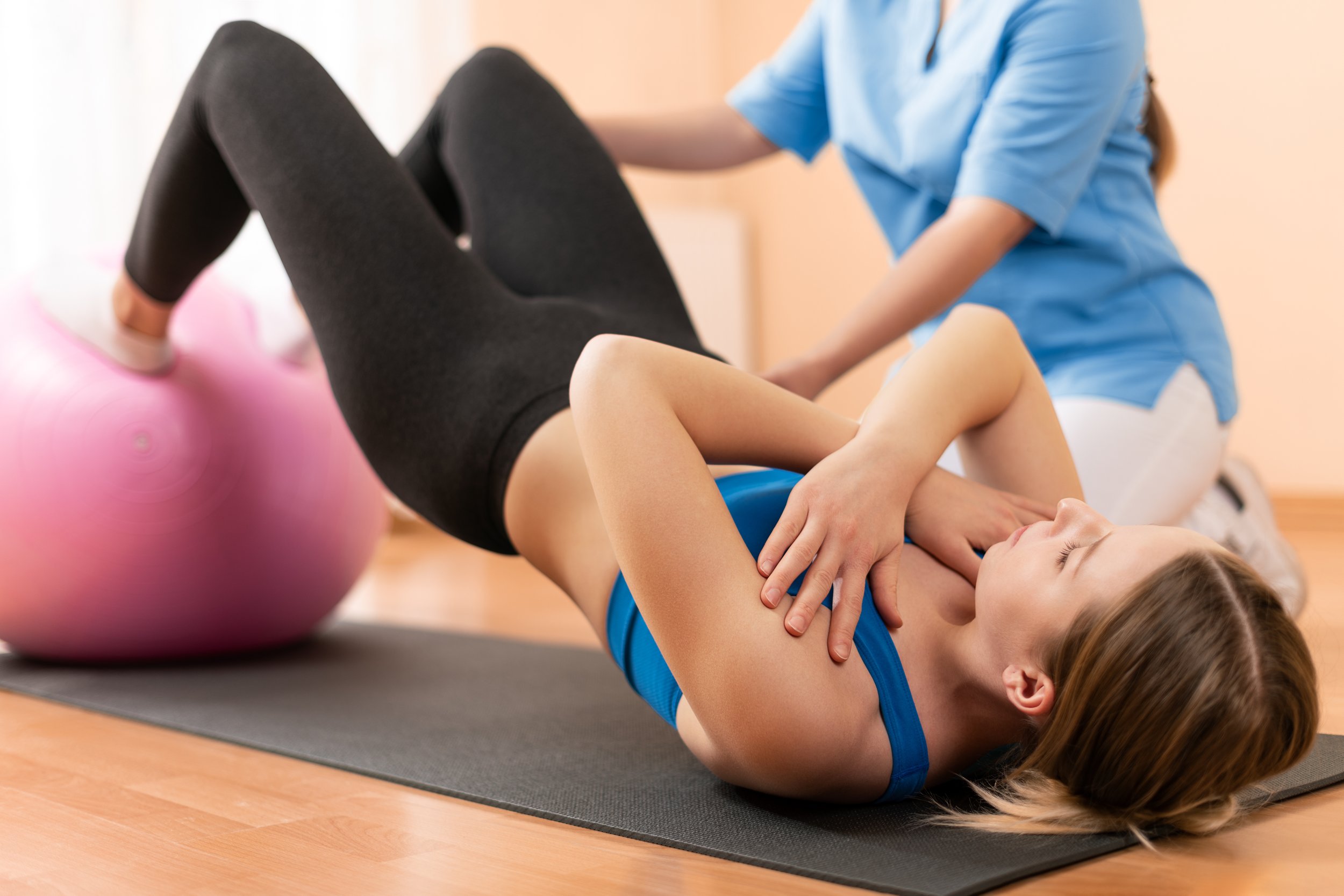Shoulder Pain Calgary
Chiropractor Calgary Deal With Shoulder Pain
What is shoulder pain and how does it occur?
The Shoulder is a ball and socket joint involving the humerus (upper arm bone) that fits into the socket of the scapula (shoulder blade). The ball and socket joint design provides functional mobility for the Shoulder; however, it can also make it vulnerable to getting injured. The shoulder joint relies on many key structures to ensure it functions optimally, including:
Joint capsule and ligaments surrounding the shoulder that provides stability
Rotator cuff muscles: A group of muscles and tendons helps stabilize the shoulder and assist with movement
Shoulder Labrum: Ring of specialized cartilage that provides linning for the shoulder socket and provides shoulder stability
Shoulder Bursa Sacs: Subacromial and subdeltoid bursas are sacs of fluids that provide cushion and protects the muscle tendons of the shoulder
Shoulder bone complex: This involves proper alignment of the shoulder blade, clavicle bone, upper arm, and shoulder ligaments
Different factors and conditions can cause shoulder pain. The most common causes of shoulder pain include rotator cuff tendinitis and shoulder impingement. Rotator cuff tendinitis indicates swollen and inflamed rotator cuff muscle tendons from repetitive use at the workplace or sports injury. Another common shoulder injury is shoulder impingement. This happens when the rotator cuff muscles get pinched at the space between the acromion of the shoulder blade and the top of the humerus. The tightness of muscles around the shoulder girdle and recent falls and impact to the shoulder joint can lead to improper shoulder alignment to trigger shoulder impingement. Here our Calgary chiropractor is going over a list of shoulder pain causes:
Rotator Cuff Injury
Rotator cuff muscles are a group of muscles and tendons surrounding the shoulder girdle to ensure keeping the head of the upper arm firmly within the shoulder socket. Injured rotator cuff muscles can cause a dull ache in the upper and front of the shoulder and worsen when lifting the arm away from the body. Rotator cuff injury is prone with older age and jobs that require repetitive shoulder overhead movement, including interior painters, carpenters, and homemakers.
Rotator cuff Injury is best to manage with physical therapy exercises combined with chiropractic care to improve shoulder flexibility and strength surrounding the shoulder joint.
Bicep/ Supraspinatus/ Deltoid Tendonitis
Tendonitis is classified as swollen and inflamed muscle tendons. Commonly athletes who participate in baseball, volleyball, badminton, tennis, and many other overhead movements can suffer from tendonitis. When these muscles are overstretched, the tendon portion of the muscle is often prone to tear partially or completely. Other mechanical issues such as poor posture, car accidents and falls can cause tendonitis.
Shoulder Tendinopathy
Tendinopathy in this subsection is described as any tendon injury ongoing for more than six months and is in the chronic phase. This is most common for people who do repetitive movement but is below the threshold for significant inflammation at the tendon. The body cannot keep up with the constant demand and load being placed on the muscle-tendon. In this case, it takes proper diagnosis on which muscle tendon is injured and modifies the movement pattern of the performed activity.
Frozen Shoulder Calgary
Frozen shoulder has a different name in the medical world called adhesive capsulitis. It is a shoulder condition that causes stiffness and pain in the shoulder joint. The symptoms for the frozen shoulder are gradual, and the pain level can increase over time and then take a long time to resolve, which can take up to two to three years. There are three stages associated with Frozen Shoulder:
Freezing Stage: THis is the initial phase for the frozen shoulder. Any shoulder movement can cause pain, which is very limited, especially with moving the shoulder to the side and reaching back and grabbing objects.
Frozen Stage: Pain can start to reduce in this stage; however, the shoulder is very stiff, and movement is very difficult.
Thawing Stage: In this last phase, the shoulder will free up and improve the range of motion.
There are known medical conditions as risk factors for frozen shoulder, including diabetes, hyper/hypothyroidism and cardiovascular disease. Proper diagnosis and chiropractic care can help you improve your shoulder pain symptoms and the time you spend on different stages for frozen shoulder.
Shoulder Osteoarthritis
Osteoarthritis is a general term describing wear and tear to the cartilage to the joints. Cartilage protects the contact surface between bones, and cartilages can start to break down with age and overuse. Damaged cartilage cannot repair itself as it does not have a blood supply. As the cartilage completely wears out, the cushion between two bones starts to disappear, causing bone-to-bone contact. When this occurs, it can cause intense pain, loss of mobility and grinding noise to the joint.
Shoulder Bursitis
Bursas are small, fluid-filled sacs that protect the muscle tendons from being pinched and reduce friction as they pass between joint spaces during movement. These bursas are prone to become inflamed during repetitive motion and direct trauma. The subacromial bursa is most prone to get injured at the shoulder girdle.
Shoulder Labral Tears
Athletes involved with overhead sports are prone to injure and cause tears to the shoulder labrum. However, the non-athlete population can also hurt their shoulder labrum when falling with their arm stretched out. Small labrum tear does not show any symptoms and cause problems; however, as the tear progresses, shoulder clicking sound and shoulder locking can occur when moving the arm across the chest and reaching up. Best management with shoulder labral tears requires proper exercise therapy and potential referral to an orthopedic surgeon for surgical consultation.
Shoulder Impingement
Shoulder impingement occurs commonly with overhead activities, such as volleyball, basketball, swimming, and badminton sports. In addition, work activities such as painters, homemakers, chefs, and office workers are prone to shoulder impingement. Shoulder muscle tendons and bursa can get pinched between the humerus and shoulder girdle when moving the arm. Another common condition commonly associated with shoulder impingement include AC (acromio-clavicular) joint sprain.
Shoulder Instability
Shoulder instability is diagnosed when the shoulder joint is too loose and unstable to cause the humerus to slip out of the socket surface of the scapula during normal shoulder movement. Medical conditions and genetics can predispose to shoulder ligaments becoming looser and leading to an excessive movement to the shoulder joint. In addition, chronic strain to the shoulder joint can lead to shoulder laxity, commonly seen in baseball players due to the high velocity of the arm when throwing a fastpitch. Proper strengthening exercises with chiropractor guidance on exercise safety can improve shoulder joint stability.
Dislocated Shoulder
There are different types of dislocation to the shoulder. Complete dislocation of the shoulder is when the ball of the humerus ball completely slips out of the shoulder socket surface. This is best managed with relocation by attending a medical emergency as improper relocation can cause blood supplies to get cut off and lead to avascular necrosis of the shoulder. An injury to the labrum, ligaments, and bones can decrease the integrity of the shoulder joint and lead to subluxation. Subluxation occurs when the ball portion of the joint temporarily slips out of the socket and pops back in. This process can frequently happen when the first episode of shoulder subluxation has occurred as the important stabilizing structures of the shoulder are stretched and loose. A complete evaluation with a primary health care practitioner is necessary.
Post-Surgery Shoulder
When there is a significant amount of rotator cuff tear or damage to the shoulder labrum, your surgeon may recommend surgery. After surgery, it is often accompanied by periods of immobilization where you are advised not to move; after a week of not moving your shoulder, muscles surrounding the shoulder joint can start to weaken. This is where exercises kick in to help combat shoulder muscle atrophy and weakness. Chiropractic treatment with the proper amount of guidance on physical therapy is vital for a complete recovery to the shoulder joint.
When should you see a Chiropractor Calgary?
Chiropractic care and management of the above conditions have been proven helpful when combined with exercise guidance from a chiropractor to speed up recovery, improve shoulder pain, and deal with chronic symptoms in the shoulder. Chiropractic treatment will involve patient education, exercise therapy, chiropractic adjustments, soft tissue therapy, Graston technique, and self-care management.
Shoulder Pain Clinic Near Me | Precision Performance & Wellness- Calgary Chiropractor
After sustaining a shoulder injury, our skilled and trained Calgary Chiropractor will conduct a full assessment to fully understand your shoulder condition. After proper shoulder injury diagnosis, a rehabilitation program and treatment program will be mapped out for you for optimal healing. If there are further interventions such as MRI, ultrasound, and X-ray that we think can help with proper diagnosis, then we will refer you to your family doctor. During the process for rehabilitation, you will be taken from simple exercise routine to functional exercises and lead to game performance activity for re-integration for optimal sports performance. We also use acupuncture treatment and provide you with our expertise on exercise safety and forms. During the process of healing, we constantly monitor your progress and adjust based on individual needs.
Disclaimer:
In this newsletter, none of the information is a replacement for proper medical advice. Always consult with your medical professionals for advice on your individual condition and concerns. Chiropractor Calgary.
Frequently Asked Questions About Shoulder Pain
-
Alberta Health Services has set standards, and guidelines for which body parts are covered and not covered for surgery. It is best to discuss with your designated orthopedic surgeon. Here is also a breakdown of fee navigator for shoulder arthroscopic procedure in Alberta health care.
Link to AHS fee breakdown: https://www.albertadoctors.org/fee-navigator/hsc/92.8B
-
Specialized trained doctors such as chiropractors can give out proper diagnoses for your shoulder pain. Also physical therapists can help perform assessments for shoulder pain as well. Orthopedic doctors are specialists to perform shoulder assessments as well, and they can provide shoulder surgery if needed.
-
The common treatment for shoulder pain includes cold press, heat therapy, muscle relaxants and pain medications, and rest. However, if you want to maximize and get the best treatment for shoulder pain, visiting a sports injury expert like a chiropractor can help shorten your time for your shoulder pain recovery.
-
You can see a chiropractor, family physician, physical therapist, and referral for an orthopedic surgeon if you are unable to move your shoulders and worsens with days after rest and does not improve in one week.
Additional Resources
BOOK YOUR CALGARY CHIROPRACTIC APPOINTMENT TODAY!
We have the best chiropractor in Calgary to help you treat your conditions and injuries and assist you to live pain-free!





